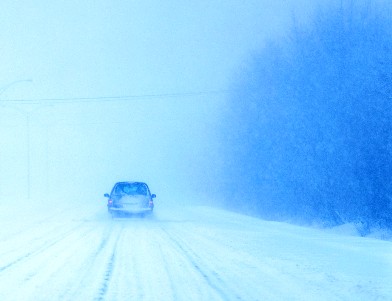 With almost every area of the country covered in snow and more extreme weather forecast for the coming days, many drivers are embarking on trips in hazardous conditions without taking adequate precautions.
With almost every area of the country covered in snow and more extreme weather forecast for the coming days, many drivers are embarking on trips in hazardous conditions without taking adequate precautions.
Over one thousand drivers on the A3 in Hampshire were snowbound before being rescued by the army.
The cold temperature is causing car batteries to fail – the number one cause of vehicle breakdowns.
Breakdown service providers are this week facing a disproportionately high number of calls during the cold weather and as a result waiting times are longer than average.
A spokesperson for the Environmental Transport Association (ETA), which was voted Breakdown Company of the Year in 2009, said: “If staying at home is not an option, drivers need to use common sense and prepare for the possibility that they may become stranded.”
Top ten tips for driving in snow and ice
- Fitting snow chains to your car’s tyres will enable you to continue your journey should you be caught in snow. You need to remove them when road conditions improve, but they are a wise investment.
- In slippery conditions avoid sudden acceleration and braking – driving as smoothly as possible will make it less likely that you slide and return better fuel economy, too. If you start to skid, gently lift your foot off the accelerator and steer into the slide.
- Keep an ‘emergency bag’ in your boot containing two blankets, a bottle of water and some non-perishable, high-energy food. Buy a block of Kendal mint cake for £2.99.
- Ensure your mobile phone is fully charged and that the number of your breakdown recovery service is stored in the memory. A wind-up emergency phone charger for your mobile costs £9.45.
- It’s important you can see and be seen so take time to remove any snow and ice from your vehicle’s windows, headlights, brake lights and indicators.
- Your car may be fitted with Electronic stability control (ESC) – a computerized technology that improves the safety of a vehicle’s stability by detecting and minimizing skids. When ESC detects loss of steering control, it automatically applies the brakes to individual wheels, such as the outer front wheel to counter oversteer. However, you may find that ESC hinders your progress up a snow-covered incline.
- Try to keep a shovel in your car so that you can dig yourself out of trouble. A small folding shovel of the sort used by the army does the trick and costs £12.99.
- Breakdown cover costs from just £24 – ensure you have cover in place
- Listen to local weather forecasts as road conditions can change fast. If you find yourself stranded in your car in snowy conditions, call for assistance and unless you are at risk of being struck by other vehicles, stay where you are.
- Do not use cruise control in snowy or icy conditions.
0 Comments View now